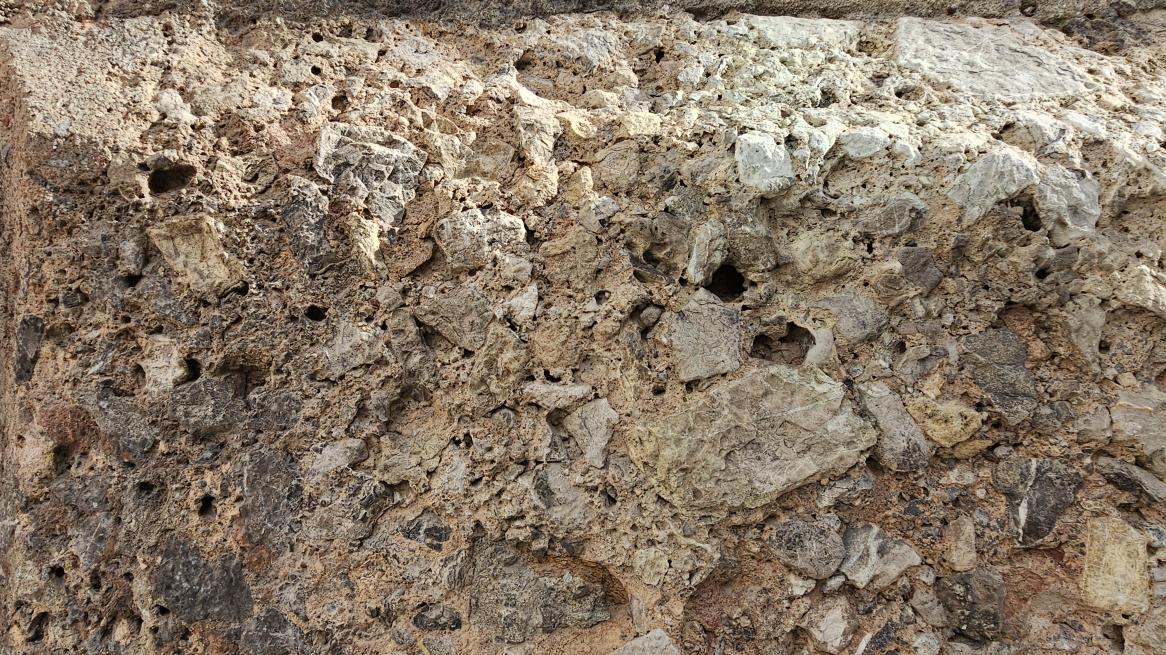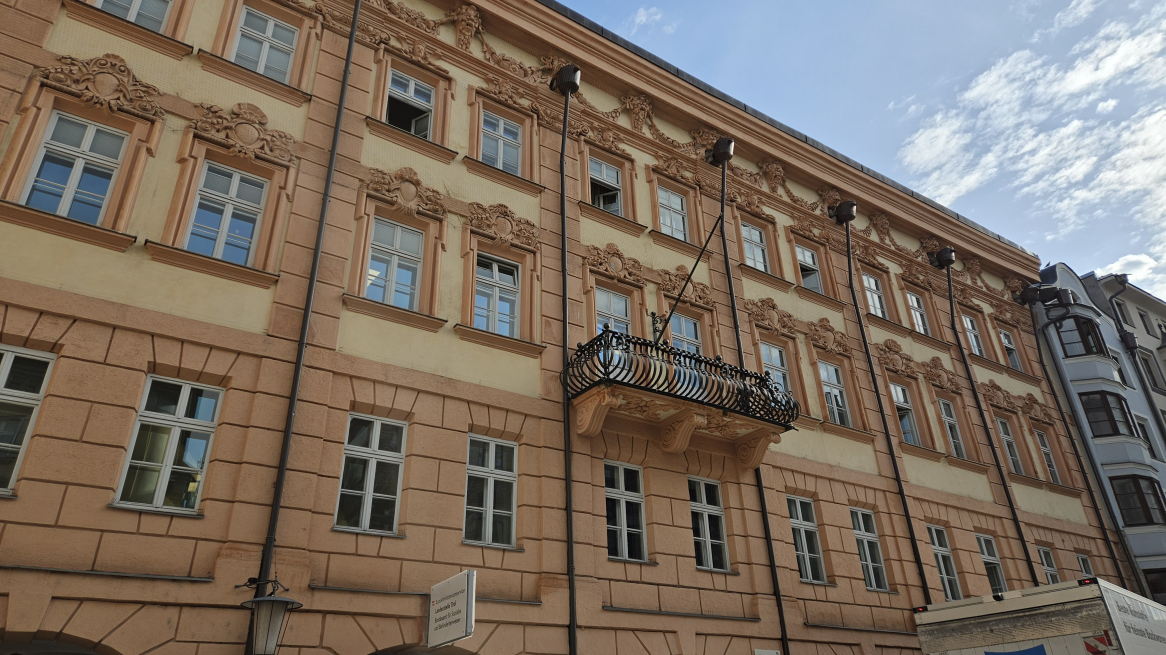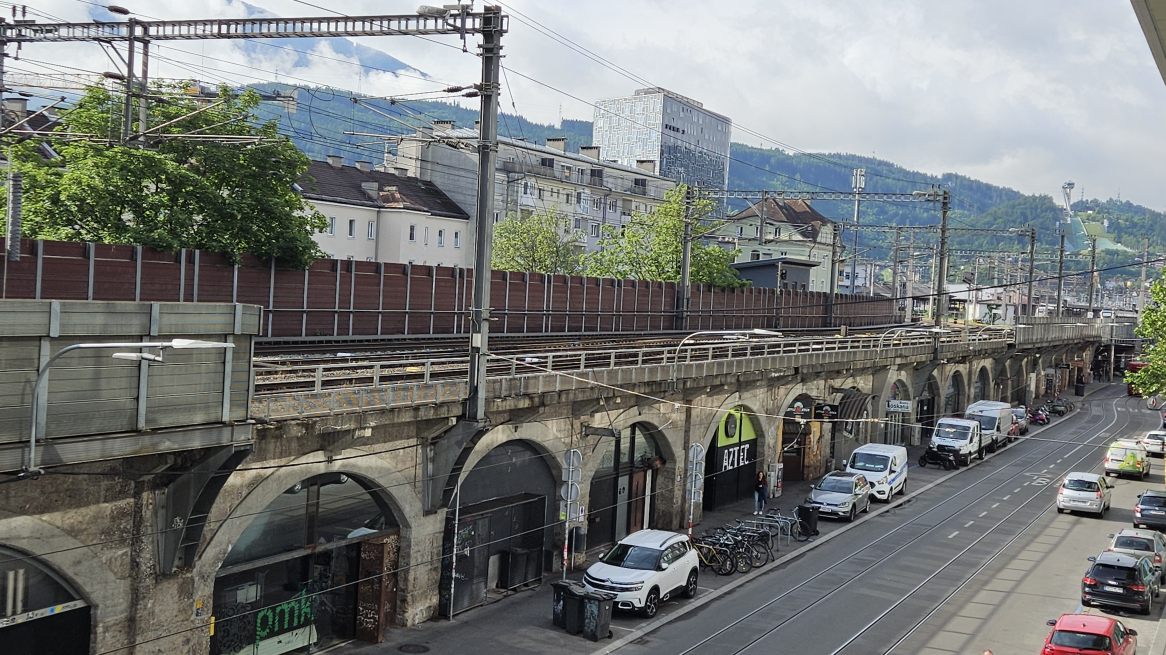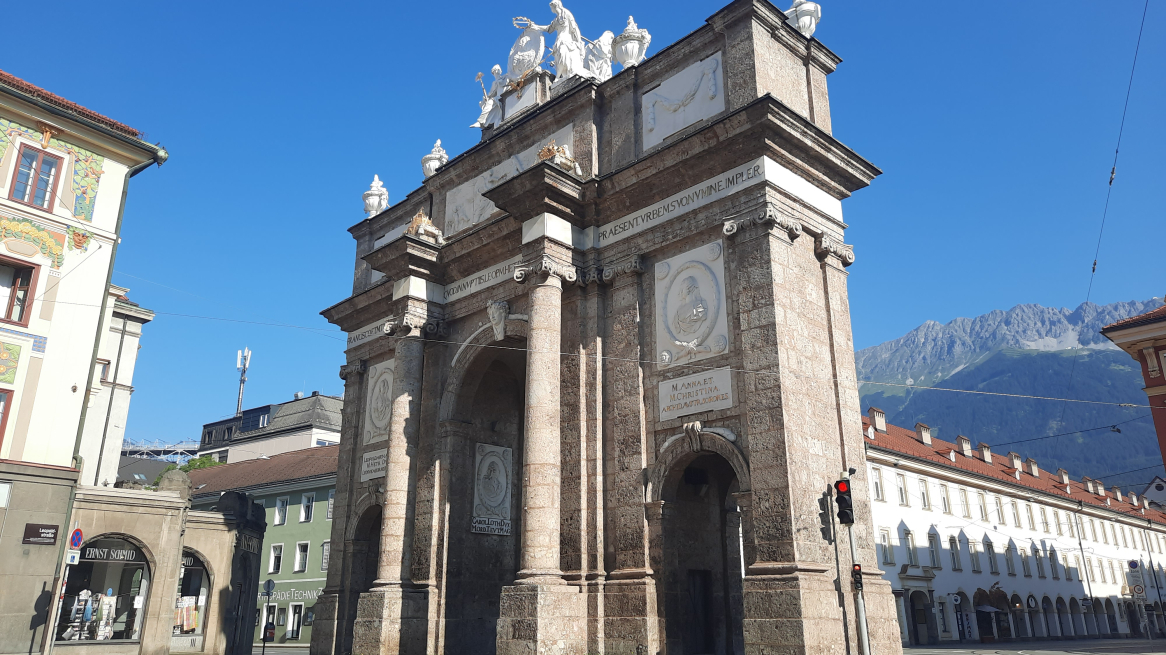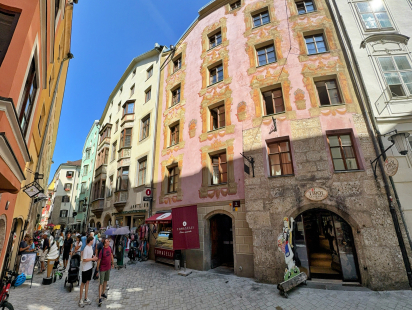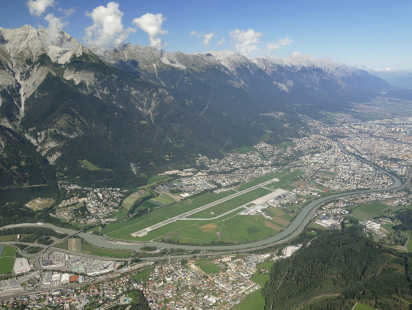
Höttinger Breccie is so omnipresent in Innsbruck that not only is it lurking around every corner, but even the corner itself is probably made of breccia. I found out for MyInnsbruck what the rock has to do with Emperor Max the First's fire aversion, how it shook up Ice Age research and why the railroad line over the Brenner heralded its end.
Stone and the age of the city
How can you tell that a city is really old? In my mind, the impression of age was always linked to bare stone, which lends buildings a mightiness that can hardly be achieved with the modern mixture of glass and concrete. However, this was not always the case in Innsbruck, as the Hötting sculptor and restorer Peter Kuttler explained to me in our conversation for this blog post.
Stone visibility as a historical norm is not the only misunderstanding that Kuttler quickly set straight. In a fit of linguistic confusion, I addressed him as a restorer - which earned me the friendly remark that a restorer is an innkeeper, i.e. has absolutely nothing to do with the only phonetically related restorer. This made it clear that there was nothing wrong with starting with the basics. So what is the Höttinger Breccie?
What is the Höttinger Breccie?
"The Höttinger Breccie is the home stone of Hötting," begins Kuttler. He uses the term Breccie throughout, while I was still talking about Brekzie at the beginning. Both versions are basically correct, but the former better reflects the Italian origins of the name. Breccie comes from the word „breccia“, which means gravel. If you look at the sedimentary rock, it becomes clear why: angular fragments are held together by a fine-grained matrix. Kuttler is constantly dealing with the rock in his work: "Breccie is present in Innsbruck for every sculptor, restorer and the like."
All red
Its presence is due to the numerous advantages of Breccie. It was quarried in five quarries in the Hötting district, so the transportation route from Hungerburg via the Grauer Stein was very short. Good workability, occurrence in large banks and rapid release of moisture made Breccie a practical building stone and material for pictorial products. However, Kuttler made one qualification: "It depends on the quality level of the breccia, which may have already declined in the last century and switched to the softer, loamier breccias."
The color alone provides an indication of the quality of the wine. The red breccia, which was used by far the most, comes off best. The white Breccie is more porous and less firmly cemented. According to Kuttler, it was only used in the Rauch mill, which also had the quarrying rights. The brown Breccie is only listed for the sake of completeness.
Stone or not stone
From the whispering arch to the viaduct and the triumphal gate, the Breccie can be seen everywhere. In many cases, stone visibility, i.e. the fact that the stone is exposed without a layer of paint or mud, only came about in the 19th century as a result of uncovering and construction work. The artist Joseph Strickner, who was known for his accuracy, produced city views in which stone-faced buildings can still be seen with slurry. Mudding was particularly popular in the Gothic and Baroque periods. During the last restoration of the Claudiana (a historic building in Innsbruck), the decision was made to revert from stone-faced to slurry. In addition to its historical basis, this also has a practical advantage: the slurry acts as a sacrificial layer. "Today's environmental influences, such as road salt in winter, destroy any rock. Whether it's granite, breccia or any other rock, it is destroyed," explains Kuttler.
At the Claudiana, the breccia has disappeared again under a colored slurry. On the neighboring building, however, it is exposed.
Ice age research in turmoil
It is fascinating that something as simple as road salt can affect a material that has already seen the last ice age. Exactly when Breccie was formed has kept geologists in the Inn Valley busy since the first investigations at Adolf Pichler. At the turn of the century, the so-called Lepsius-tunnel was finally created near the Alpine Zoo, which finally brought clarity: Brekzie lies between the glacial moraines of the last two ice ages, Riss and Würm. According to Kuttler, this interglacial formation is something extraordinary: "Breccie has stirred up everything in the geological world, including ice age research in the Inn Valley." In 1910, it was discovered that there must have been two ice ages and not just one.
History, carved in stone
The mining of Breccie probably began earlier, but it is mentioned in documents from the 13th century onwards. The quarrying rights were a special matter: around 1500, Innsbruck became the court seat of Emperor Maximilian the First. He had a great interest in ensuring that Innsbruck did not fall victim to fire - like so many other towns at the time. So between 1490 and 1520, he had the previously wooden old town rebuilt with stone buildings. During this time, the breaking rights to the Höttinger Breccie went to the citizens so that they could build their houses fireproof.
According to Kuttler, around 10,000 cubic meters were used, including monumental buildings such as the viaduct(also known today as the Arched Mile), which was the largest consumer in the 19th century. Bricks were not yet an issue back then, explains Kuttler: "You have to consider that the cast stone from Hötting was cheaper and quicker to process than brick and of course also had physical advantages over brick." The production of bricks was energy-intensive, and the wood required was used for smelting ore.
In addition to Innsbruck, the neighboring town of Hall is also dominated by Breccie, and in Schwaz it was also used on a smaller scale. It can even be found in Bavaria: "Breccia was either cheaper or more exclusive due to the navigable route." The famous stonemason dynasties of the time also contributed to the spread of the stone. The Thüring family, for example, who came from Memmingen, created famous works in Innsbruck such as the Whispering Arch and the reliefs on the Golden Roof. The latter, mind you, are made of sandstone, as Breccie is not suitable for such fine work.
Historical recycling
One of the most interesting stories involving Breccia revolves around the Triumphal Gate. It is more or less a recycled building. One of the old city gates had previously been demolished (the current entrance to the old town from Maria-Theresien-Straße). The Breccie thus freed up was then used in the Triumphal Gate.
"Back then, there was a much greater appreciation of the material, because it was hard work to extract it," says Kuttler. Of course, Breccie did not always appear on its own, it was often used in combination with other rocks. At the parish church Pradl, for example, you can see a wonderful skeletal structure made of breccia, which was supplemented by Innsbruck phyllite. Houses from Innsbruck's Wilhelminian period, during which Breccie was still used as a building stone, also show such a skeletal structure.
The end of the Breccie
So how did it come about that this once highly prized building material is now only used as a decorative stone? Various factors played a role here. The quality slowly declined, the industry weakened and then there was pressure from improved infrastructure. "The Breccie has also been partly replaced by the southern railroad, because transporting Franzensfeste with granite has suddenly become much cheaper," explains Kuttler. Previously, the Brenner Pass was a difficult route, but now it was passable even for blocks of Franzensfeste granite, Trentino marble and Bolzano porphyry weighing several tons.
Between the 19th and 20th centuries, the largest quarries finally came to an end and with them the Breccie.
These quarries once provided numerous jobs, and Kuttler says that many families in his home community of Hötting can look back on stone processing jobs in their past. Today, people climb where they once toiled: in the Hötting quarry. In a way, the Breccie remains part of modern Innsbruck.
Breccie wherever you look
Keep your eyes open when walking through the city! Because once you know what it looks like, you'll spot the Breccie everywhere. It can often be seen in Innsbruck's old town and city center in particular. And if you want to follow in its footsteps and are familiar with climbing, take a look at Höttinger Steinbruch. Where Breccie was once mined, people now climb.
Photos: Theresa Kirchmair
Rate this article
Show me the location on the map
Enthusiastic Tyrolean with a penchant for the absurd. Likes to jump over walls and then uses the resulting bruises as a Rorschach test.
Similar articles
Hinter der wunderschönen blassrosa gehaltenen Barockfassade eines Hauses in der Innsbrucker Altstadt verbirgt sich eine Art…
100 years ago, in the morning hours of June 1, 1925, dignitaries, military personnel and politicians,…
Since Samuel Tanner has been able to fly, you rarely see him on the ground. He will…
Historic streetcars in Innsbruck: these…

